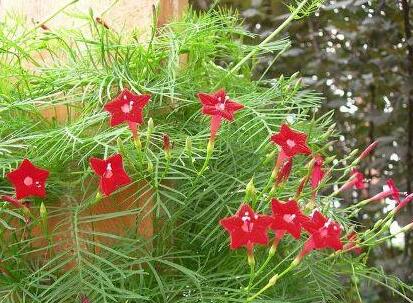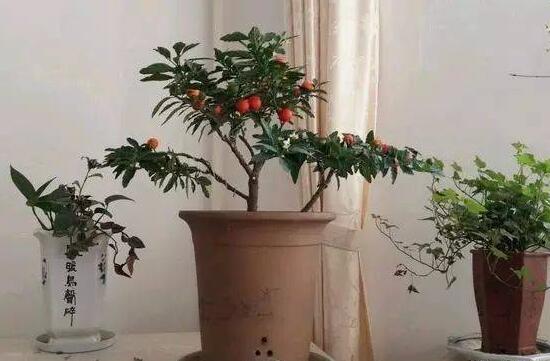How to plant Rhizoma Drynariae
Rhizoma Drynariae is an accessory pteridophyte of Orchidaceae, and its main medicinal value is its rhizome. The main function of Rhizoma Drynariae is to strengthen the bone, tonify the kidney, disperse blood stasis and relieve pain, join bones and continue tendons, and so on. It is often used to treat toothache, low back pain, long diarrhea and other symptoms. At present, it is mainly planted in the angry areas of Liaodong, Shandong, Jiangsu and parts of Taiwan. So how to plant Rhizoma Drynariae artificially? Now let's learn how to grow it.

1. Soil preparation and fertilization
Rhizoma Drynariae has the characteristics of liking yin, moisture, coolness and avoiding strong light, so it generally grows in an environment with sufficient Rain Water and high humidity in the air. Planting land will generally be selected in the areas behind the sun, forests, valleys and other places, the soil should be rich in humus, the soil is sand and gravel. Planting needs to carry out full reclamation, and turn deeply, clean up the weeds, roots and eggs in the planting land, smash and rake the soil, apply sufficient farm manure, and stir evenly. Finally, ditching and ditching blend with each other, which is convenient for water conservancy management.
2. Methods of reproduction
There are three methods of propagation of Rhizoma Drynariae, which are ramet propagation, rhizome propagation and spore propagation, of which rhizome propagation is the main one. The best planting time for ramet propagation is in May and June, mainly to separate the mother plant, each section of four or five centimeters, placed in a cool place, and then planted after budding. Spore reproduction is to collect mature spores of Rhizoma Drynariae to allow spores to reproduce and grow, but the germination rate of spores requires progressive scientific spore treatment. Finally, the rhizome propagation only needs to select the stout, full-bud rhizome, then truncate to about 15 or 16 meters, and then plant according to the row spacing of 45 cm and the plant spacing of 40 cm.
3. Field management
Because Rhizoma Drynariae is a kind of plant that likes shade and avoids strong light, then we need to carry out scientific field management according to its characteristics. First of all, if the light of the planting land is strong, then we need to build a sunshade in time to shade, the best shading degree is about 50%. Secondly, it is necessary to carry out at least three or four times of intermediate ploughing and weeding every year, but shallow ploughing is generally used so as not to affect the normal growth of Rhizoma Drynariae.
4. Cultivation techniques
The main cultivation techniques of Rhizoma Drynariae are water management and fertilization. Rhizoma Drynariae has high requirements for soil moisture and air humidity, so we should water it regularly to maintain the humidity in the planting environment. If it is found that the leaves of Rhizoma Drynaria withered, it can be immersed in water and spray water on the soil. If there is still growth after a day, the withered part needs to be cut off. As for the topdressing of Rhizoma Drynariae, we mainly pay attention to the application of base fertilizer to ensure that the content of humus is sufficient, followed by the appropriate amount of nitrogen fertilizer, phosphate fertilizer and potassium fertilizer.
The above is the artificial cultivation technology of Rhizoma Drynariae, in fact, as long as the planting conditions are in line with the standard, water management is accurate, then the success of planting is not difficult. This is the end of the editor's sharing today. If you have any questions, please remember to leave us a message.
- Prev

What about the yellowing of pineapple leaves? 7 common reasons need to know / attach solutions.
In the process of planting a plant, there are many factors that affect its growth, such as the leaves may turn yellow when we are not watered properly, the roots may rot when there is stagnant water for a long time, and so on. Therefore, we need to use the correct method of planting pineapple to avoid this situation.
- Next

How to raise winter coral, the methods and precautions of winter coral culture / not afraid of bright light
As a beautiful indoor potted plant, winter coral flower friends should be no stranger, it has fruit all the year round, so it is also known as the four seasons fruit. In life, many people will choose to raise a pot of winter coral at home, then how to raise winter coral? In this regard, the editor carefully sorted out the culture methods and matters needing attention of winter coral.
Related
- Fuxing push coffee new agricultural production and marketing class: lack of small-scale processing plants
- Jujube rice field leisure farm deep ploughing Yilan for five years to create a space for organic food and play
- Nongyu Farm-A trial of organic papaya for brave women with advanced technology
- Four points for attention in the prevention and control of diseases and insect pests of edible fungi
- How to add nutrient solution to Edible Fungi
- Is there any good way to control edible fungus mites?
- Open Inoculation Technology of Edible Fungi
- Is there any clever way to use fertilizer for edible fungus in winter?
- What agents are used to kill the pathogens of edible fungi in the mushroom shed?
- Rapid drying of Edible Fungi

